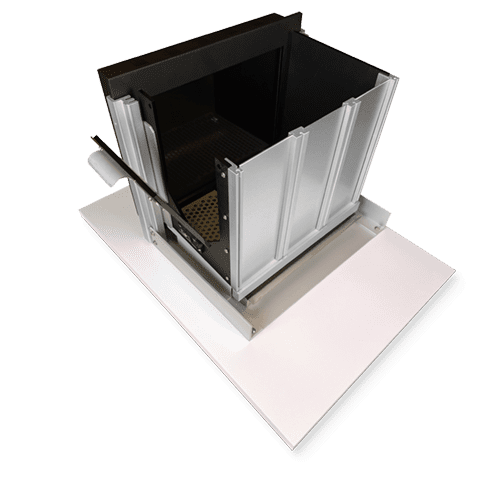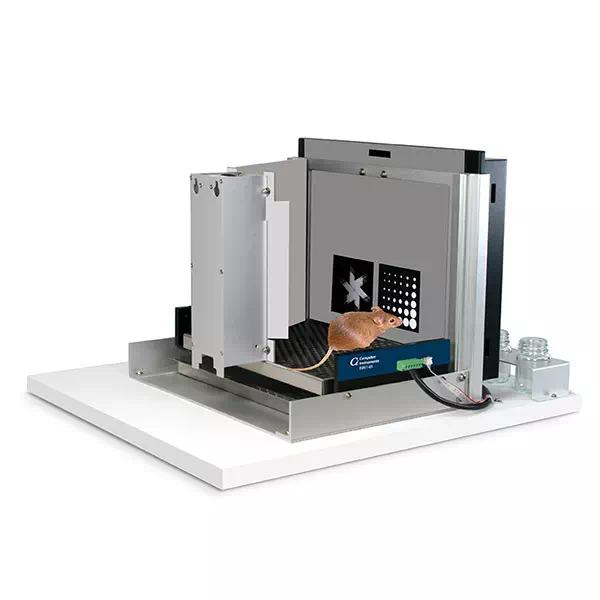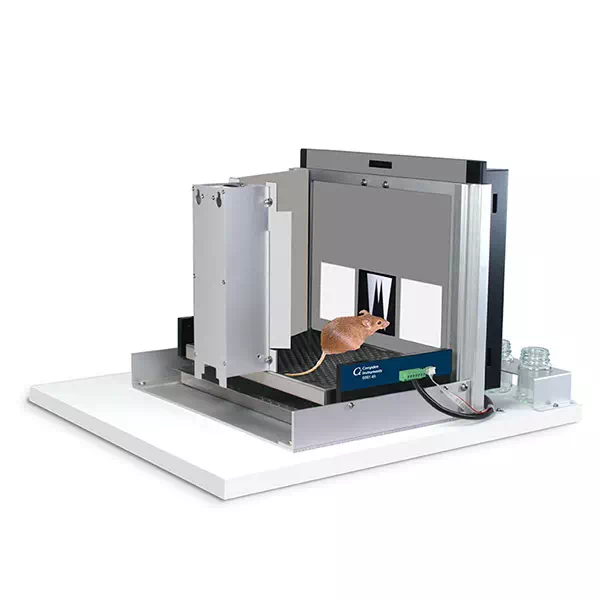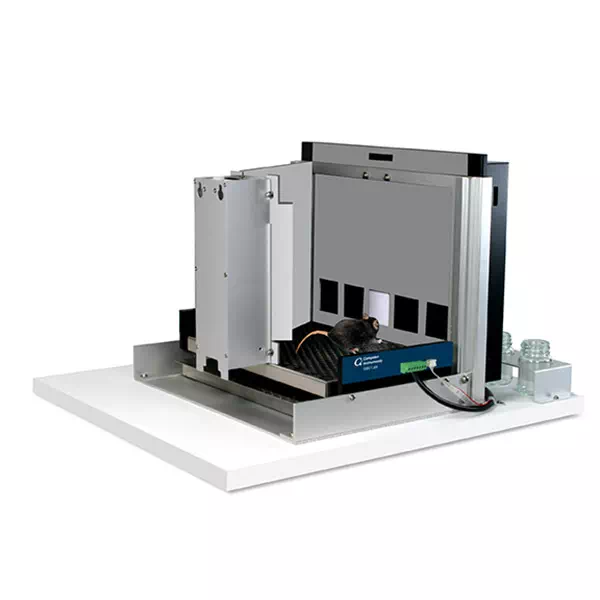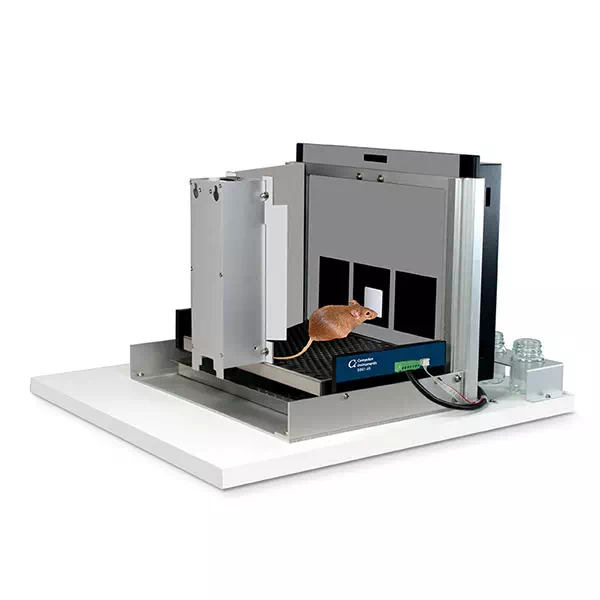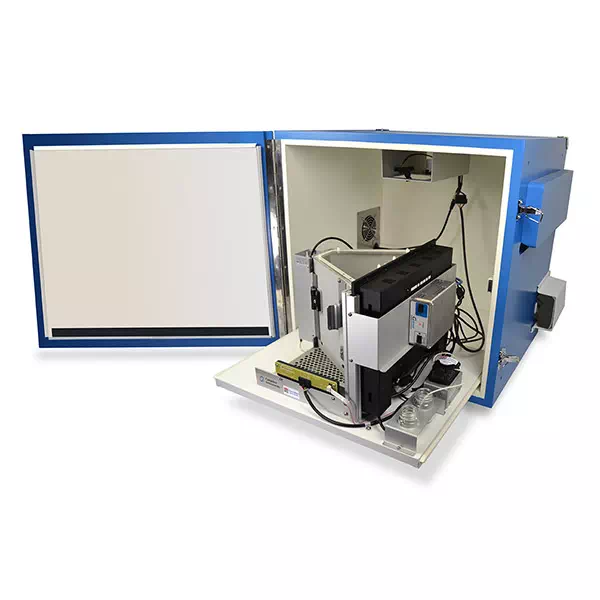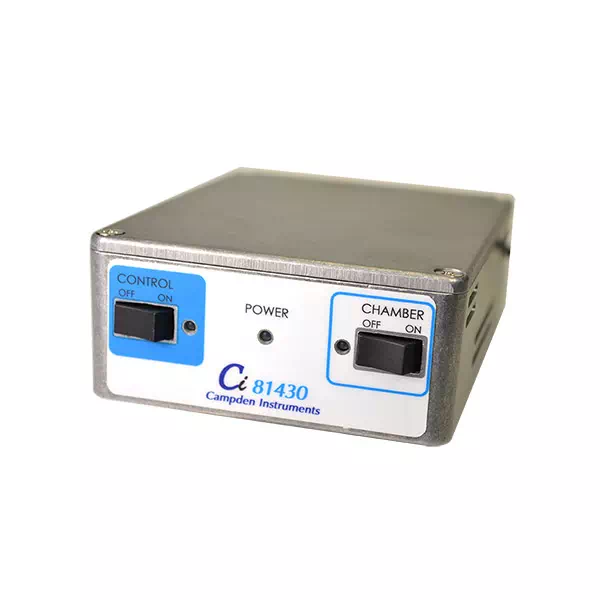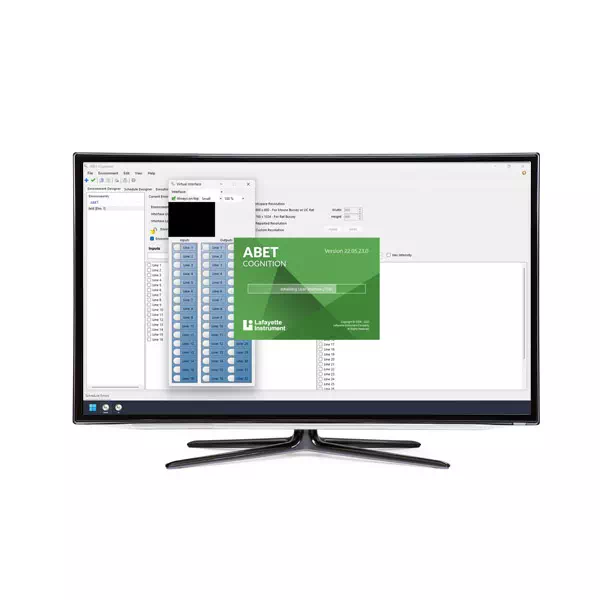A Decade of Continuous Touch Screen Development
First developed at Cambridge University, Bussey-Saksida Rodent Touch Screen Chambers are now used by +300 research groups in over 26 countries. The Bussey-Saksida Chamber has always featured a unique trapezoidal wall shape in order to focus the animal’s attention and facilitates the efficient and high-throughput cognitive evaluation of rodents. The chamber is easily reconfigured to a modular square arena with panels, levers, lights, and a range of other operators to accommodate any task like an operant chamber equipped with a traditional lever or nose-poke.
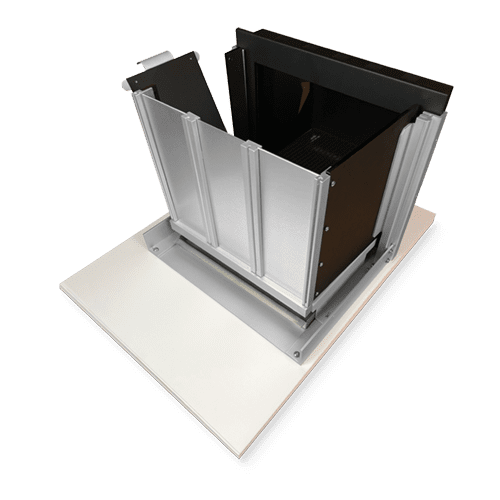
It’s easy to get started!
Each Chamber Includes:
You can even start with any of our popular set up options. Want to upgrade later? There is an easy upgrade path to our fully-featured cognition chamber!
Video
The Second Generation Bussey-Saksida chamber was built with video in mind. New non-reflective walls and floors will aid video tracking, and IR and ambient lighting located under the chamber lid provide even lighting of the chamber and eliminate glare.
Tethered Animals
Many accommodations for tethers can be made including updated lid and open reward areas to accommodate headstages. A convenient sliding drawer can be added to the environmental cabinet to neatly store and feed the tether.
Electrophysiology
All electronic components are adjusted to reduce EMC. The environmental cabinet is a Faraday cage to prevent outside noise from the surrounding area from entering the chamber. Even the touch screen itself is shielded to reduce noise emission.
Designed for simplicity and flexibility
Paradigms
The Bussey-Saksida chamber allows usage of standard, original, and customized paradigms.
The rodent tasks range from simple to complex and are Translational to the same Tasks used with NHP and human populations on the Cambridge Neurological Test Automation Battery (CANTAB) system. All paradigms include training routines as well as the main experimental paradigm and the data analysis sets.
Certain standard tasks may require the full high cognition touch screen chamber.
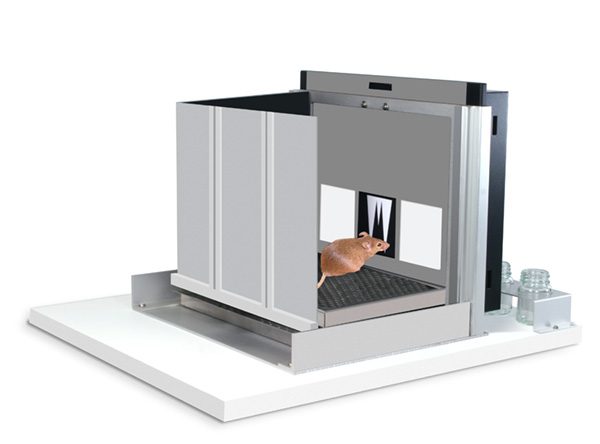
| NHP/Human CANTAB Equivalent | Standard Tasks | Typical time to reach baseline | Example neural systems involved | Clinical area showing impairment |
|---|---|---|---|---|
| NHP | Pretraining to touch an image and initiate a trial | 1–2 weeks | Learning | |
| Human/NHP | Pairwise / Visual Discrimination (PD) and Reversal Learning | Pretraining + 5–7 sessions test to reach base line | Prefrontal Cortex, Perirhinal Cortex, Anterior Cingulate, Posterior Cingulate, Medial Frontal Cortex, Striatum, Dopamine system, Cholinergic system, NMDA receptors. Mediodorsal Nucleus of the Thalamus | Huntington’s, Schizophrenia, Parkinson’s, Learning, Cognitive Flexibility, Executive Function. |
| NHP | Visuomotor Conditional Learning for Rodents (VMCL) | Pretraining + Approximately 20 sessions | Dorsal Striatum, Posterior Cingulate Cortex | Huntington’s, Parkinson’s |
| NHP | Location Discrimination for Rodents (LD) | Pretraining + 10–20 sessions | Hippocampus, Neurogenesis | Alzheimer’s, Schizophrenia |
| NHP | Extinction for Rodents (EXT) | Approximately 4 sessions training + a sessions days extinction | Infralimbic Cortex, Striatum and Amygdala | ADHD, OCD |
| NHP | Progressive Ratio and Effort Related Choice Task for Rodents (PR/ERC) | 16 sessions from first habituation to reach stable PR performance | Dopamine | Motivation, Decision Making |
Key Features
- Write your own Tasks or use one of the many pre-written validated Tasks currently available, including all training paradigms.
- Modular construction requires lower initial cost yet retains a simple upgrade path to a turn-key High Cognition chamber.
- Walls now in a lighter color that provides better contrast for the camera to capture the animal’s image or contour when tracking.
- The chamber floor is now matted to reduced glare from the house-light, again for better consistent image capture by a camera for observation or tracking.
- Easier animal handling with side or top loading as standard.
- Door with magnetic catches for quiet operation.
- Easier access to remove the floor for cleaning.
- Optional Integration with other measures such as Optogenetics, Photometry, Video Tracking and Electrophysiology Recording are available.
- Additional third-party systems can be integrated with TTL input and output lines, with low e.m.c. noise 80604EA chambers for integrating with Electrophysiology Recording.
Specifications:
Animal Working Area
- 260mm Wide x 202mm Tall x 164mm Deep
Standard Environmental Cabinet
- Attenuation: Approx. 35dB
- Weight: 38 kg (empty)
- External Dimensions: 600mm Wide x 670mm Tall x 352mm Deep
- Internal Dimensions: 540mm Wide x 610mm Tall x 352mm Deep

